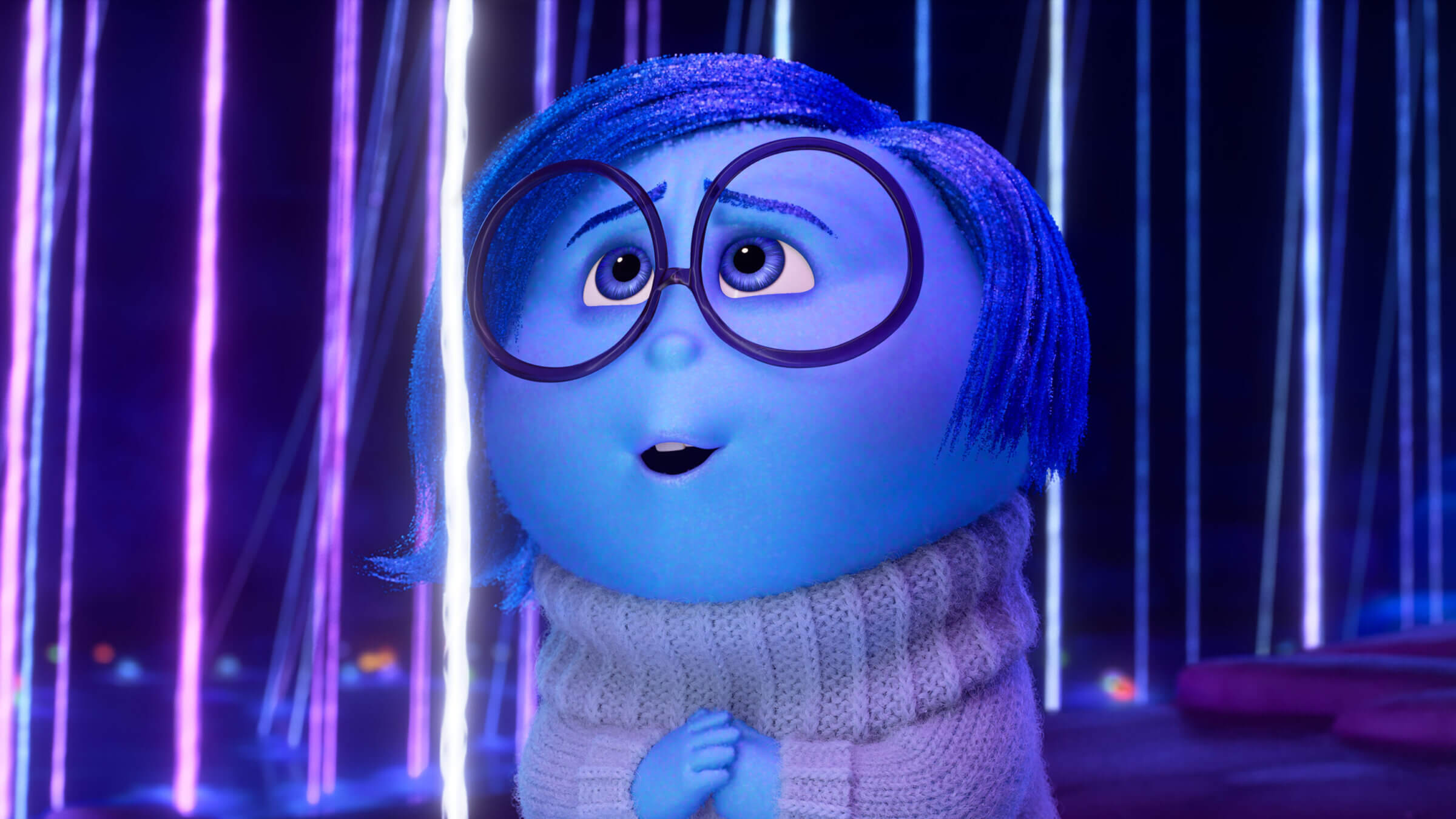5 films to watch with kids this Tisha B’Av
On a painful day of Jewish mourning, here are some movies that tackle grief, sadness and Jewish suffering in a kid-friendly way

Psychology professor David Menendez says Sadness from Disney-Pixar’s Inside Out can help young people navigate negative emotions, such as grief. Courtesy of Disney Studios
Tisha B’av, the ninth day of Av, mourning the destruction of the two temples in Jerusalem in 586 B.C.E. and 70 C.E, is a difficult day for Jewish families even during times of relative calm.
Traditionally, many families in America watch films related to Jewish persecution during this day of mourning. This year, on top of Holocaust and antisemitism-related films, many families are also watching recent documentaries related to the suffering of Israelis, Jews and Palestinians since Oct. 7.
But for families with young children who may not be able to fully grapple with the atrocities of the Israeli-Palestinian conflict, the Holocaust, or even the destruction of the two temples just yet, there are still ways to communicate themes of grief and suffering through film.
“Part of what showing these movies actually does is open up conversations that children might already be wondering about,” said David Menendez, an assistant professor of psychology at the University of California, Santa Cruz.
Menendez researched depictions of grief in animated films as part of his Ph.D. He said that children’s films can facilitate open conversations about death, which can act as an introduction for some parents to convey specific religious or spiritual beliefs.
“A lot of work on how children grieve has shown that being able to have conversations with their parents about that topic is really, really useful for them,” Menendez added.
With this knowledge in mind, here are some movies you can watch with your little ones on this somber day, even if they have a few more years to go before being whisked away to watch Schindler’s List at Jewish summer camp.
Tissues ready?
1. ‘Inside Out’ (2015)
A modern classic on how to feel … well, everything. Inside Out, which premiered in 2015, is the perfect film to help small children understand sadness on a day where many families abstain from outward acts of joy and celebration.
With a poignant message about embracing all of your emotions, not just the warm and sunny ones, it’s easy to understand why the film has become a fixture in school counselling rooms and children’s therapy sessions. After all, how can you be afraid of Sadness when she looks so cozy in that sweater?
Recommended for children ages 6+.
2. ‘An American Tail’ (1986)
If Stephen Schwartz got his hands on a copy of Maus, the result might look a lot like this animated Jewish family classic. An American Tail expertly depicts the challenges of Jewish American immigration with animal puns, catchy tunes and Disney Golden Age-level animation. Set at the turn of the century, the film follows the Mousekevitz family of mice as they evade pogroms in Russia and immigrate for a better life free of persecution in America.
This movie uses a narrative tool of stowaway mice and antisemitic cats to reflect many real-life hardships in Jewish history, including persecution, poverty and intra-community infighting. Sadly, as the Mousekevitzes learn, there are cats in America, just as there are persistent antisemites in the modern day.
Recommended for children ages 5+.
3. ‘The Lion King’ (1994)
A lot of early Disney movies tackle tough subjects. Bambi and Dumbo have traumatized at least three generations with their depictions of mother-child separations. But for this list, I’m going with a pick from the Disney Renaissance: an era of outstanding Disney animation in the 1990s where openly Jewish filmmakers like director Rob Minkoff and Disney chairman Jeffrey Katzenberg were finally in the driver’s seat.
The Lion King portrays grief through the eyes of a child in a way that is realistic and heartbreaking. It also depicts a community in which a corrupt leader exiles the rightful heir to a throne and oppresses his kingdom, which requires brave leadership and community cohesion to remedy. These are some distinctly Jewish themes straight out of both Jewish history and the Bible. In fact, as Lior Zaltzman reports for Kveller, the stories of Joseph and Moses in the Old Testament directly inspired The Lion King’s screenwriters.
My only advice? Stick to the 1994 original, not any of the direct-to-DVD sequels, unless you really want to suffer this day.
Recommended for children ages 6+.
4. ‘Where Is Anne Frank’ (2021)
Acclaimed Israeli director Ari Folman’s creative animated film Where is Anne Frank imagines if the “Kitty” who Frank addresses in her diary was an actual person. More specifically, Folman imagines if she was an outspoken, red-headed girl navigating contemporary Amsterdam. Kitty’s adventures take her from the Anne Frank House to a homeless shelter harboring refugee illegal immigrants, as she grapples with how modern society handles Anne Frank’s legacy.
Folman’s magical realist take on Anne Frank’s life is a great way to introduce modern young audiences to the tragedy of the Holocaust in an accessible way. By connecting past and present, Folman explores the legacy of Jewish suffering in a way that engages young viewers and fosters critical thought about dehumanization and “othering” today.
A bit more on the older side. Recommended for children ages 9+.
5. ‘Coco’ (2017)
Listen, I don’t think the creators of Disney-Pixar’s Coco intended their film to be a Tisha B’Av movie. The film is explicitly about the Mexican Dia de los Muertos, not the Bar Kochba revolt nor the 1492 expulsion of Jews from Spain.
Still, Coco is a gorgeous and culturally sensitive story about death and family legacy, in which the afterlife is depicted less as a gloomy bore and more as a technicolor roller coaster ride. While Jewish and Mexican traditions may diverge on their depiction of (and emphasis on) an afterlife, Coco ultimately teaches audiences to not fear death and instead embrace life and family — a teaching so Jewish it might as well be included in next week’s D’var Torah.
Recommended for children ages 7+.

















